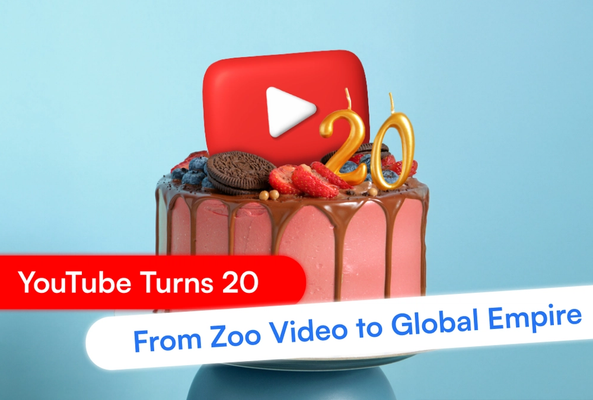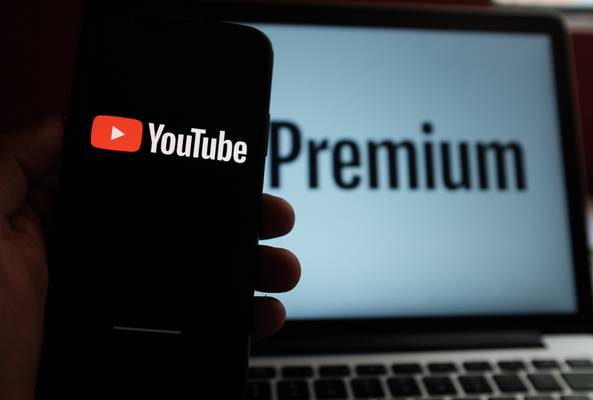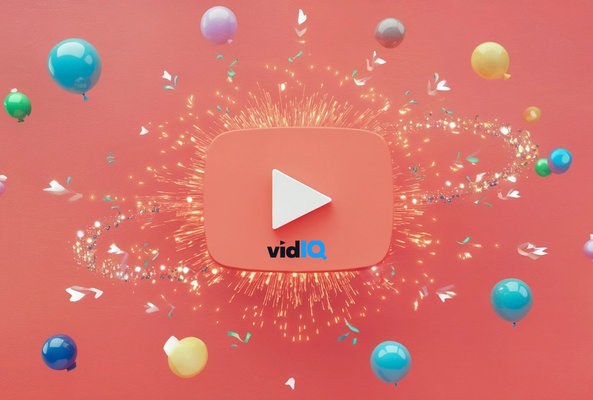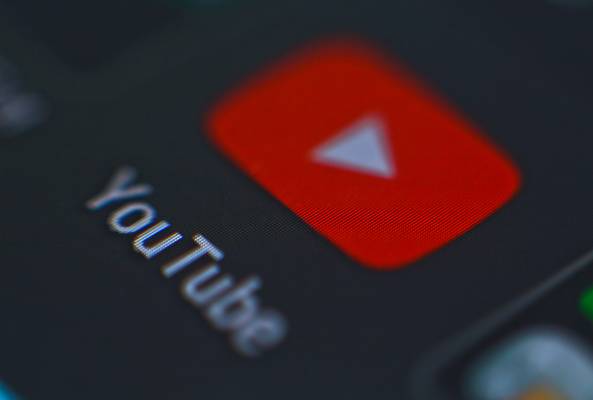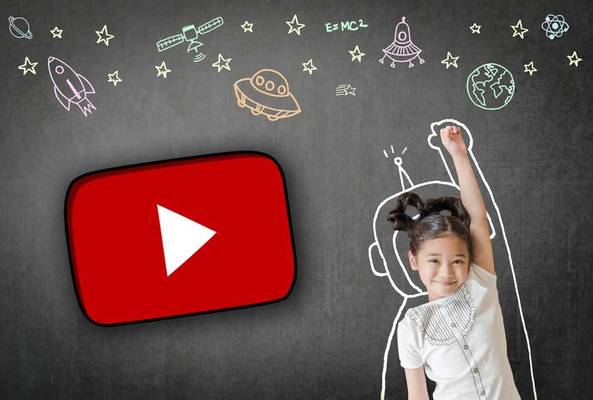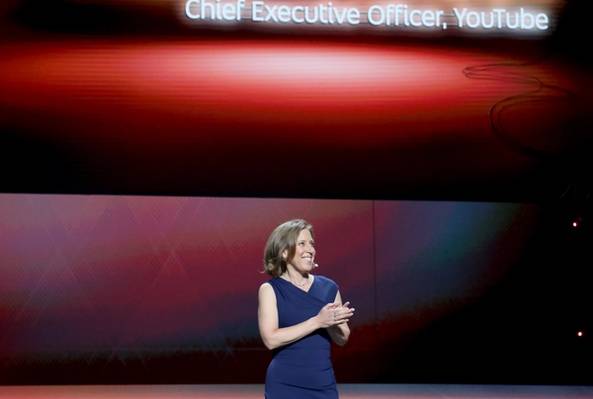In addition to being an avid movie and gaming enthusiast, Uttaran Samaddar is an experienced writer who has lent his creativity and unique perspective to various publications. He loves hearing and telling stories.
YouTube Updates Policy on AI Content
YouTube has officially unveiled its evolving stance on AI-generated content, ushering in what may be the most significant shift in platform policy since monetization itself. Speaking at the All-In Summit, YouTube CEO Neal Mohan laid out the platform’s strategy to navigate, and even embrace, the rise of artificial intelligence in video creation.
Rather than shunning AI, YouTube is building a framework that accepts it as an inevitable part of the future. In doing so, the platform is redefining what it means to be a creator, while simultaneously developing tools to protect human identity in a world of synthetic voices and digital doppelgängers.
“With the growth of these AI enablement tools,” Mohan said, “you’re going to see that the distinction between ‘completely AI-generated’ and ‘AI-assisted’ is going to be a continuum.”
This statement captures the essence of YouTube’s direction: AI is not a threat to be fought, but a reality to coexist with.
Stop Guessing. Start Growing.
Join 20M+ creators using vidIQ to get more views, subscribers, and success on YouTube.
Read More: YouTube Automation: Get AI-Powered Titles, Thumbnails, Descriptions, and Video Ideas
What does it mean for us human creators then? Our very own Rob Wilson has broken it all down in the video above. So, if you were still on the fence about the acceptance of AI in the YouTube ecosystem, it's time to rethink.
AI Is Here to Stay
Let’s be clear: there will be no ban on AI-generated content. No sweeping purges. No platform-wide crackdowns reminiscent of “Skynet-like” shutdowns.
Instead, YouTube is creating what Mohan calls “guardrails”. These include policy transparency, technological enforcement tools, and most surprisingly, monetization options for AI remixes of existing creators’ work.
This starkly contrasts with the fearmongering that has surrounded AI’s use in media production. From Hollywood strikes to deepfake scandals, the conversation around AI has largely revolved around fear, theft, and job displacement.
Mohan’s central thesis is that AI-generated content cannot be neatly categorized as “real” or “fake.” Instead, YouTube acknowledges a spectrum of AI involvement:
- Some creators use AI merely as a tool: helping edit videos, writing scripts, generating thumbnails, or improving SEO.
- Others go full AI: producing entire videos using synthetic voices, faces, and even personalities.
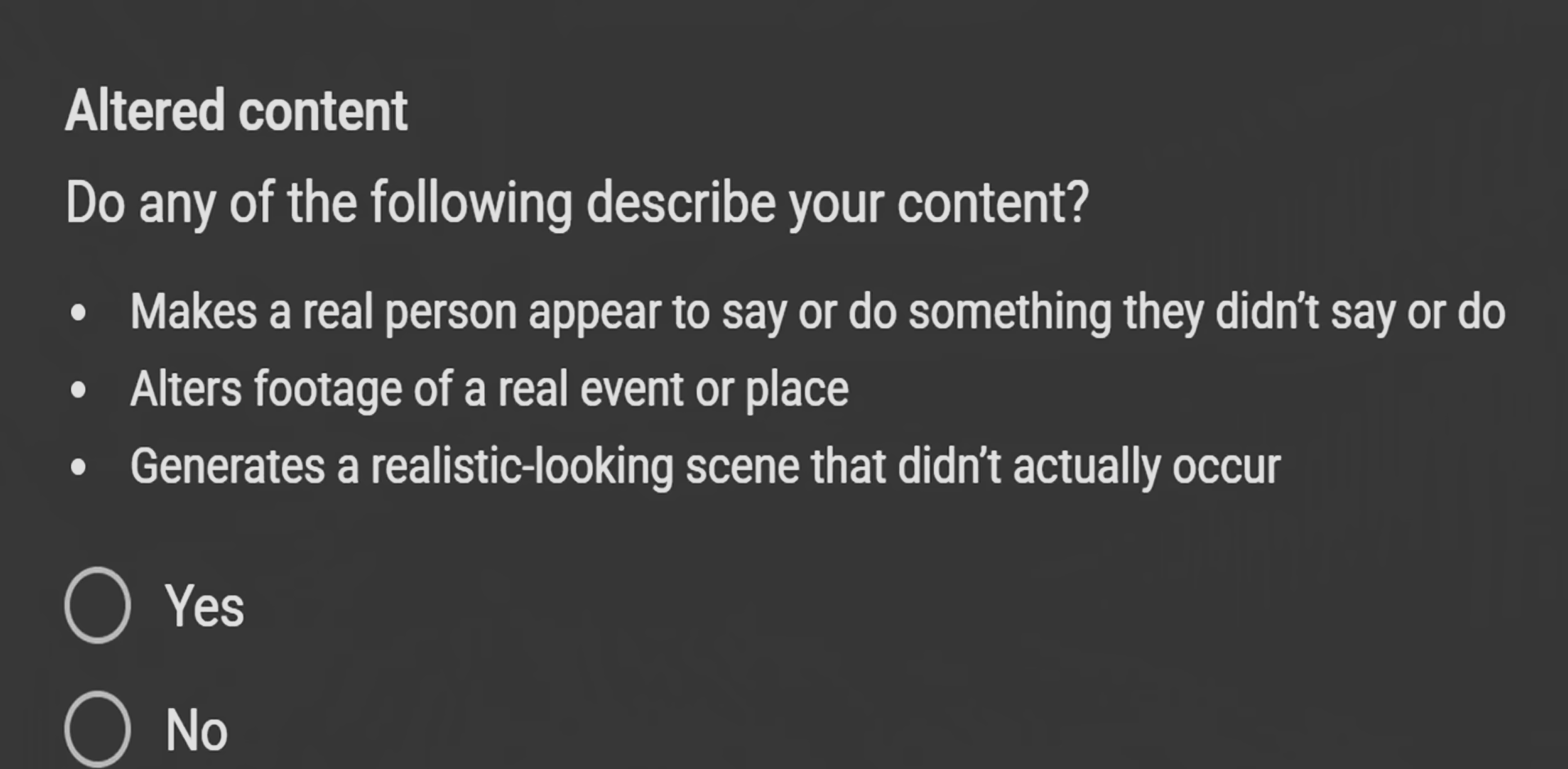
This spectrum-based model mirrors the evolution of other creative technologies. Think of the photography world’s shift from film to digital to AI editing. In each case, the tool didn’t kill creativity, instead redefined it.
By treating AI as a creative layer, rather than a danger zone, YouTube is positioning itself as a platform that grows with creators, not against them.
Labeling AI Content
One of YouTube’s first major steps in this direction is the implementation of AI-content labeling. Creators are now required to label videos that include AI-generated elements. This is not a penalty. There’s no demonetization or viewer warning attached to it. It's a form of viewer advisory, similar to a “contains strong language” tag.
“We will literally put [the AI label] on the video,” Mohan explained, “and in some cases, it’ll be in the metadata.”
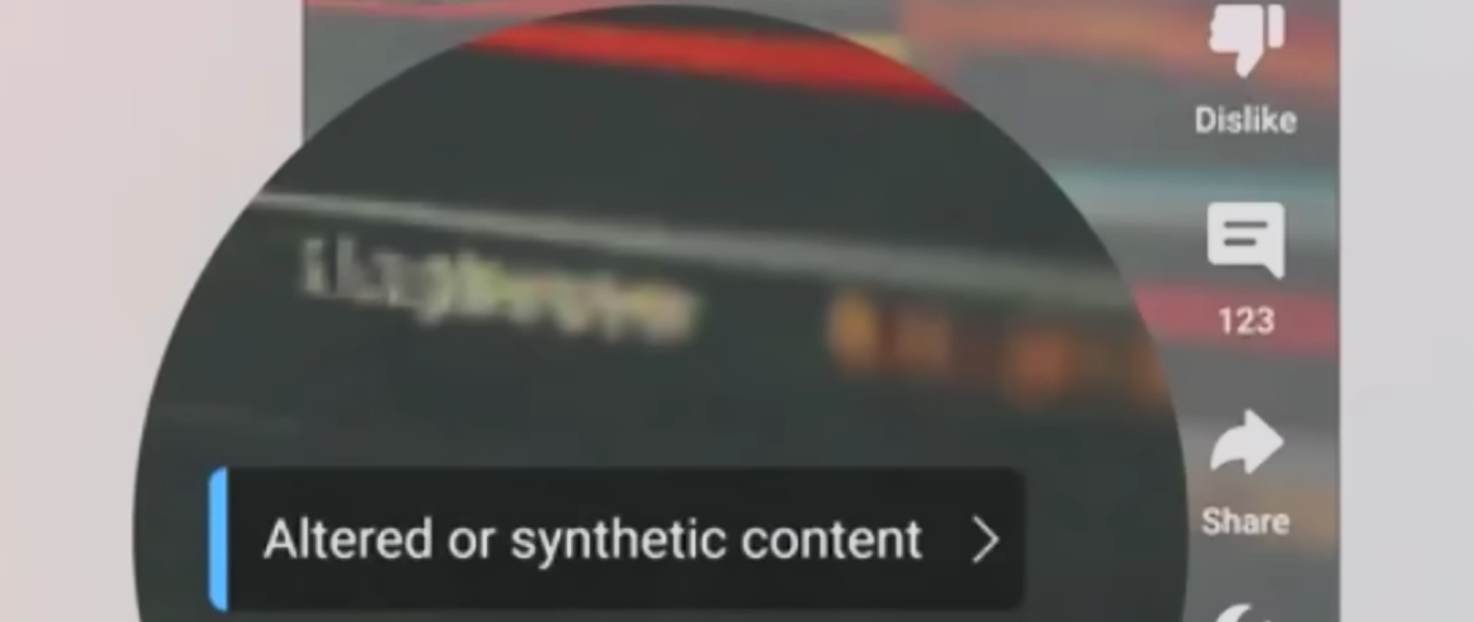
While it's still imperfect and nascent right now, this is a clear indication that YouTube wants to define the degree of AI usage on videos. For example, if you want to us the Generate tool for some content ideas or the thumbnail maker to create your video's image, it's not the same as a fully AI-generated video from a text prompt.
Still, the intention is clear: transparency without suppression. YouTube doesn’t want to hide AI—it wants to normalize and contextualize it.
Protecting Identity: Likeness Detection
With AI tools like Sora, Pika, Runway, and many more on the way, making it easier than ever to generate lifelike videos of real people, the risk of identity misuse has skyrocketed. Imagine someone making a video that looks like you’re:
- Endorsing a product you’ve never seen
- Promoting a political agenda you don’t support
- Saying things you’d never say
This is arguably the most crucial problem to deal with for YouTube concerning the AI boom. The Likeness Detection Tool allows creators to detect, review, and request the removal of videos that use their face (and potentially voice) without permission—especially when those appearances have been synthetically generated or altered using AI. Here's how it works:
1. Accessing the Tool
- Go to YouTube Studio
- Click Content Detection in the left-hand navigation
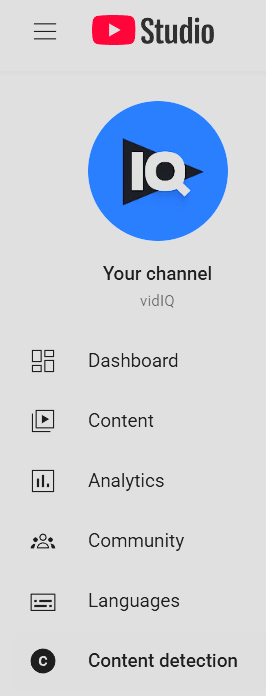
- Select the Likeness tab
From here, you begin the onboarding process.
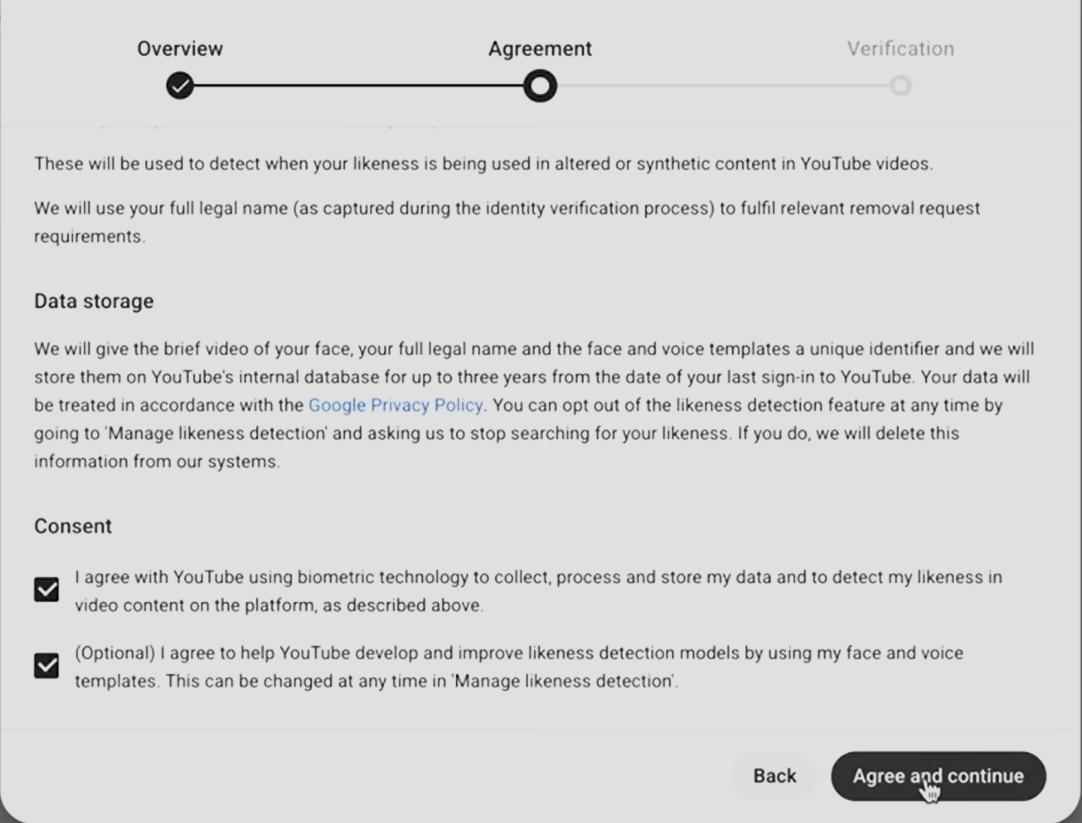
2. Onboarding & Verification
Because the tool deals with your legal identity, YouTube requires you to verify who you are. You will have to upload a selfie style video to the Google database which will be used as reference for your face and voice. You are also required to upload a photo ID to verify your date of birth and other important details.
Note: You must consent to this process and may withdraw access at any time.
3. Detection Results Interface
Once verified, the tool will show:
- Videos where your face was detected using AI
- Channel info, upload date, views, and subscribers of the uploader
- Priority level (assigned by YouTube’s system)
- A preview segment where your likeness appears
4. Taking Action: 3 Options
From here, creators can choose:
- Request Removal under YouTube’s Privacy Guidelines
- File a Copyright Complaint
- Archive the Video if no action is needed
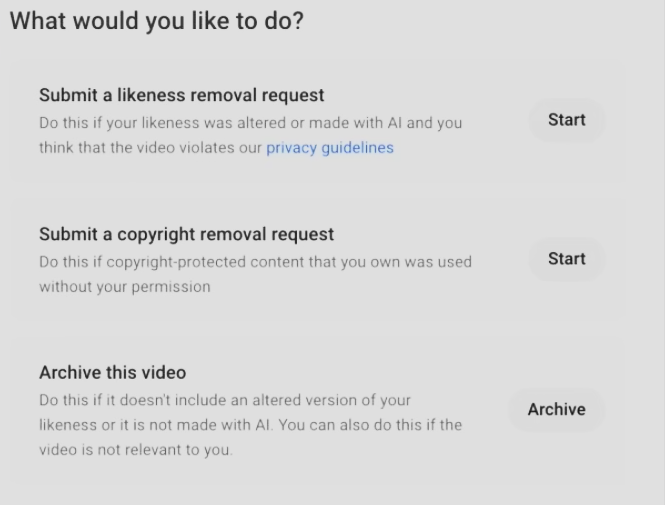
The table below will give you an idea of the likely scenarios where each of these actions are relevant:
Removable Under Privacy Policy A fake video showing you endorsing a political candidate A deepfake ad where your face is selling a product you never approved A synthetic video edited to mislead your audience | Removable Under Copyright Policy A clip from your actual content altered with fake audio A cropped and re-uploaded version of your video to bypass detection | Possibly Not Removable Videos using short clips under fair use or satire/parody Synthetic content with clear AI labels |
|---|
This feature was first announced at the “Made on YouTube” event in September, and after testing it with a small group of creators, YouTube is now rolling it out gradually to all creators in the YouTube Partner Program. This video by Creator Insider will give you all the necessary information:
Not only is YouTube pressing forward to implement ethical and fair use of AI, but with this tool, you'll also be able to monetize AI remixes and reuse of your content, possibly opening a brand new way to sustainably earn on YouTube. For creators, these are exciting times!
Read More: 25 YouTube Updates that Will Affect Your Channel in 2025
20k+ 5 Star Reviews
Ready to put this into action?
Use vidIQ to find your next video idea, pick better keywords, and optimize every upload.

